Yesterday’s Tomorrows
Astro-Face of the Year 2017
According to beauty experts in 1967, the women of 2017 would wake up in the morning and make themselves beautiful by applying a paste-on "Moon Maid Mask" that would "change the structure of a face from neckline to hairline."Other 21st-century beauty enhancements would include:
Instant Youth: Plastic surgery in the form of silicone or other type injections which do in a matter of minutes what now takes weeks of hospital treatment.
The instant youth prediction was fairly close to the mark.



Akron Beacon Journal - Sep 10, 1967
Posted By: Alex - Sun Jan 01, 2017 -
Comments (0)
Category: Fashion, Yesterday’s Tomorrows
The scientist who feared inhaling beer cans
Back in 1969, air-pollution researcher Alfred Hulstrunk had arrived at the pessimistic conclusion that pollution levels were getting so bad that within 10 to 15 years every man, woman, and child would need to wear a breathing helmet to survive outdoors. And within 20 years, he predicted, everyone would have to live in domed cities.Part of the problem, Hulstrunk believed, was all the stuff that society produced, such as "plastic beer containers that can be burned instead of just discarded." When burned, the beer cans added to air pollution. He noted, "Aesthetically you improve your area so that you don't have beer cans along the road, but now you are breathing beer cans."
Therefore, Hulstrunk had prepared for the future by designing an air pollution survival suit "to prevent inhaling beer cans or any other matter."
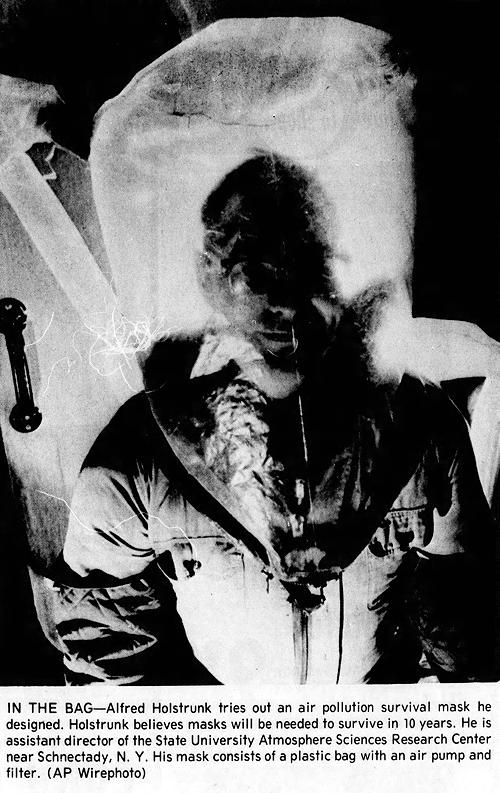
Corsicana Daily Sun - Dec 23, 1969
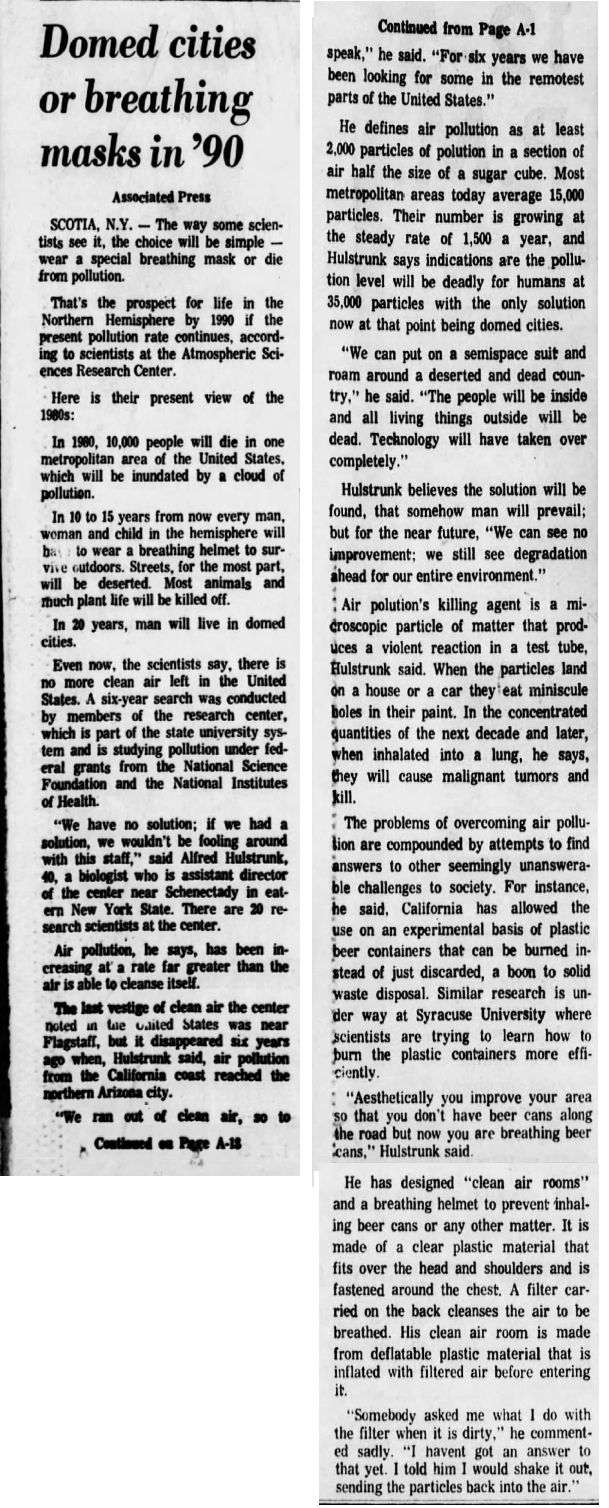
Arizona Republic - Dec 21, 1969
Note: It looks like Hulstrunk is still around, now aged 90. He recently gave a talk at Cedars of Lebanon State Park.
Posted By: Alex - Mon Aug 08, 2016 -
Comments (8)
Category: Predictions, Yesterday’s Tomorrows, Science, 1960s
Our American Crossroads
The weird part of this documentary is the puppet diorama and its turntables. A strange form of presentation.
Of course, this documentary also represents about the first two-thirds of the famous poster by Robert Crumb.
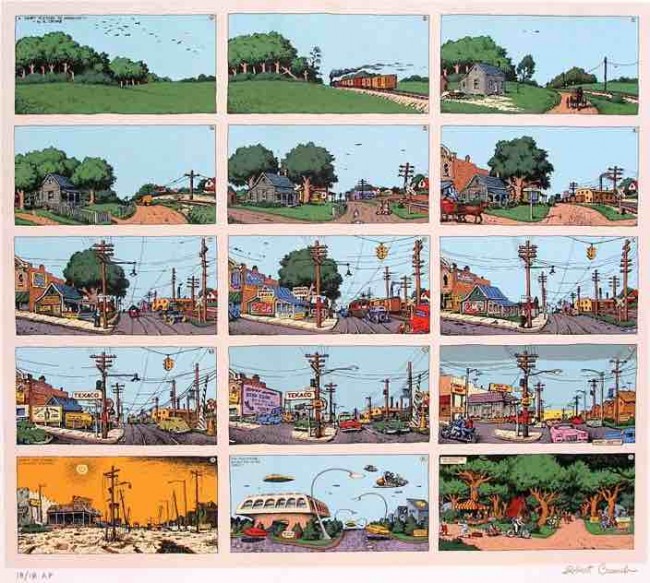
Posted By: Paul - Fri Jun 10, 2016 -
Comments (3)
Category: Futurism, Comics, Documentaries, 1960s, Cars, Yesterday’s Tomorrows
The Electric Shopper Car
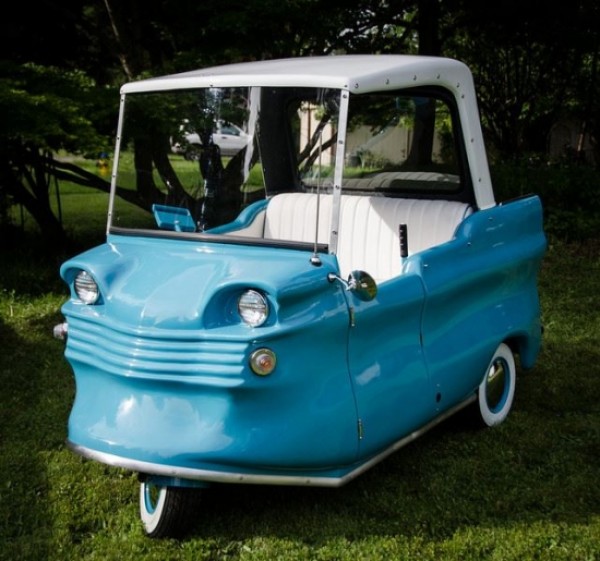
Full story here.
Posted By: Paul - Thu Jan 21, 2016 -
Comments (12)
Category: Inventions, Technology, 1960s, Cars, Yesterday’s Tomorrows
Predictions for 2016 from 1966
In 1966, Margaret Thorne, a member of the Junior Historian Club of Woodrow Wilson High School in Beckley, West Virginia, published some predictions for the year 2016 in her local paper. Here's what she envisioned for the year we've now arrived at:The growth of suburbia: "the only land untouched by suburbia will be the national and state parks and forests, that our ancestors were foresighted enough to conserve and a few farms of enormous size in the midwest."
Work: "the vast majority of the people will be seated in front of man's ingenious invention, the computer."
Food: "People will take a pill for breakfast that will supply them with needed nourishment. Algae, a very simple plant, which can be grown in great vats and will multiply rapidly, can be made into very appetizing morsels."
Fuel: "More sources of fuels must be found and methods for bringing the natural resources to the surface. Someone must find ways to captivate the sun's radiation and make it work for us. The sun will need to be our major fuel in the years to come."
Water: "Our water supply will need to be taken from the seas as our lands get drier and drier."
Not bad, all in all. The food-in-pills and ubiquitous spread of suburbia were misses. But she scored on the increasing importance of computers, and she kind of anticipated the development of fracking and growth of solar technology, as well as the water scarcity (which is certainly true here in California).

The Raleigh Register — Apr 25, 1966
Posted By: Alex - Fri Jan 01, 2016 -
Comments (5)
Category: Predictions, Yesterday’s Tomorrows, 1960s
The Stout Scarab
The 1936 Stout Scarab is referred to by some as the first minivan. Its definitely one cool car!
Posted By: Alex - Fri Sep 25, 2015 -
Comments (4)
Category: Design and Designers, 1930s, Cars, Yesterday’s Tomorrows
The Continental-2 Stereo Round Jukebox
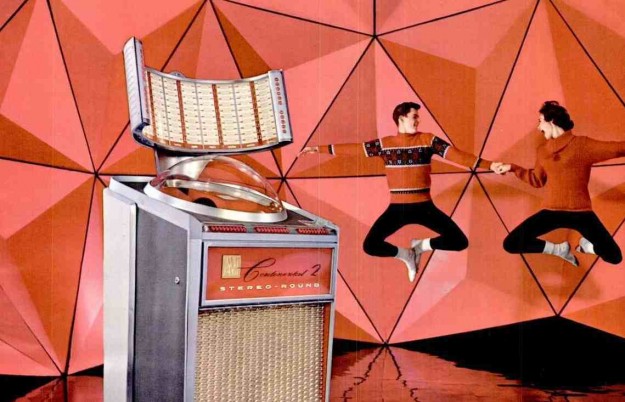
One sold for $2800.00 recently on eBay.
Posted By: Paul - Fri Sep 04, 2015 -
Comments (1)
Category: Space-age Bachelor Pad & Exotic, 1960s, Yesterday’s Tomorrows
Tomorrow: Television!
Posted By: Paul - Thu Apr 30, 2015 -
Comments (4)
Category: Technology, Television, 1940s, Yesterday’s Tomorrows
Mystery Illustration 3
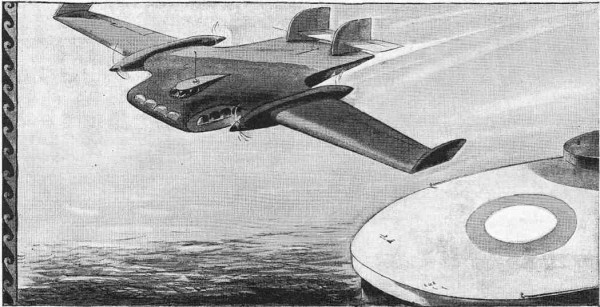
This "futuristic" plane was:
1) conceived in the 1920s to occur in the 1940s
2) conceived in the 1930s to occur in the 1950s
3) conceived in the 1940s to occur in the 1970s
4) conceived in the 1950s to occur in the 1980s
The answer is here.
Posted By: Paul - Mon Dec 01, 2014 -
Comments (7)
Category: Futurism, Air Travel and Airlines, Yesterday’s Tomorrows
The Car of 1980
This is what Jack Charipar, director of Plymouth's product-planning team, imagined in 1961 that cars would look like in 1980. Source: Newsweek - Jan 23, 1961.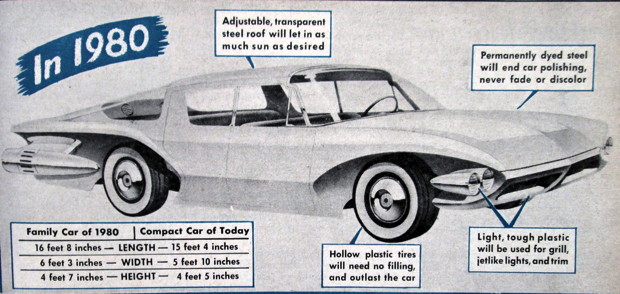
Posted By: Alex - Sat Aug 09, 2014 -
Comments (7)
Category: 1960s, Cars, Yesterday’s Tomorrows

| Who We Are |
|---|
| Alex Boese Alex is the creator and curator of the Museum of Hoaxes. He's also the author of various weird, non-fiction, science-themed books such as Elephants on Acid and Psychedelic Apes. Paul Di Filippo Paul has been paid to put weird ideas into fictional form for over thirty years, in his career as a noted science fiction writer. He has recently begun blogging on many curious topics with three fellow writers at The Inferior 4+1. Contact Us |




